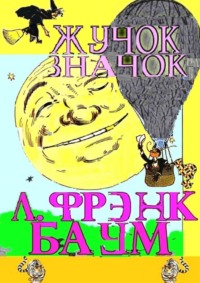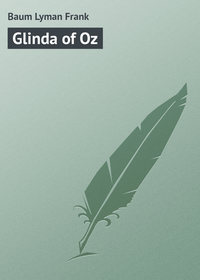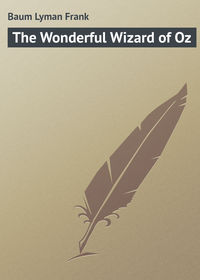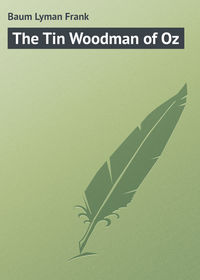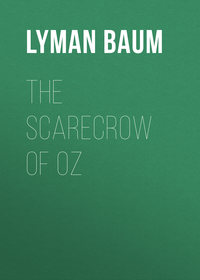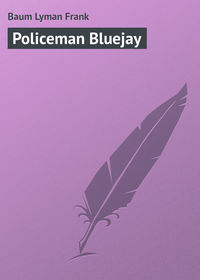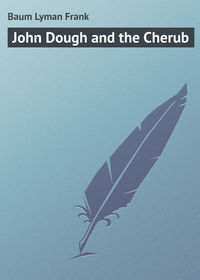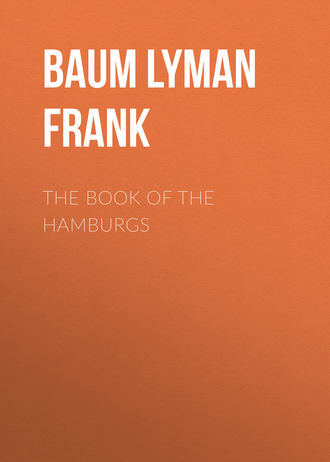 полная версия
полная версияThe Book of the Hamburgs
The Face.– One of our chief difficulties in breeding Hamburgs is the tendency to white in the face, which should be a deep, rich crimson, almost scarlet. A white face is a positive disqualification, and a dark gypsy face much to be avoided. Both these latter defects owe their origin to the Spanish cross, although white specks in the face will often appear in pure-bred birds as they advance in age. By careful breeding, and judiciously selecting those cocks which retain a pure red face, this may be entirely bred out, while breeding from birds showing the white face fixes the defect in the progeny, and causes much trouble to the breeder before it can be eradicated. It is rare to find a two or three-year-old cock which does not show a patch of white under the eye or near the ear-lobe; but the graver and more common the fault, the more pains should be taken to breed it out, and we have no doubt but the time will soon come when such a thing as a white-specked face in the show room will be unknown. We trust efforts will be made in this direction.
Legs and Tail.– The legs should be a dark, leaden blue, approaching black, in young birds, as the tendency is to grow light with age. Light blue legs in a cockerel or pullet are very objectionable.
The tail in male birds should be long, well curved, and graceful, flowing rather backward from the rump. A squirrel tail is a grave fault – a disqualification, in fact – as is also a wry tail or one carried constantly to one side. Wry tails have various causes, originating sometimes from accident, but they are often hereditary, and wry-tailed birds should never be used for breeding. Often the cramped quarters of an exhibition coop will render a bird temporarily wry-tailed, or rather induce it for a time to carry it to one side. This will usually disappear when the bird is given full range, but is quite an unfortunate circumstance, as a prize bird is often thrown out on this account.
Symmetry.– This means a great deal in Hamburgs; and as no breed is more symmetrical or graceful in form, particular pains should be taken to prevent them from running into a Game or Dorking shape. We have often seen breeders send birds to the show room which were good in all other points, but most degenerate in symmetry. We heard a prominent judge say lately that “symmetry could not be expressed; it was something about which every man had his own ideas, and applied to birds according to his judgment.” Each breed has its distinct symmetry of proportions, and it would be no more absurd to expect a Cochin shape on a Hamburg than it is to admit a Hamburg to be well proportioned with the slender neck, long legs, and high station of a Game, or the heavy, square and dumpy appearance of the Dorking. In fact they must be real Hamburgs in shape; neck medium length, and carried well over the back; back not very long or very short; breast full, prominent and wide; wings good size, the points carried comparatively low; tail ample and well spread out, and carried rather erect; thighs well rounded and of medium length; shanks slender, smooth and neat; carriage showing gracefulness and activity. By no means must they carry the idea of being Black Dorkings, or Rose-combed Spanish, or worse yet, untrimmed Games. Avoid also narrow bodies and whip tails.
Points in Breeding Black Hamburgs.– In mating any variety for breeding, the faults to which they are most liable should be borne in mind, and the breeder’s one idea be to breed them out, and so perfect the birds as much as possible. This in some instances may take years of careful and painstaking matings; years of disappointment and chagrin may follow, as we see the defects still cropping out, and realize the failure of all our carefully-laid plans. But how glorious is the feeling enjoyed by the fancier when at last skill triumphs, and he beholds in a numerous and nearly perfected progeny the result of years of toil and study. Then it is that he hies him joyfully to the show room; then it is that he triumphs over the breeder who has so long plucked the premiums from under his nose; and as he returns home, after enjoying his first genuine success, his thoughts are employed as to the best means of further improving his birds; and to such men – studious, painstaking and persevering – we owe that perfection in our domestic fowls which is so astonishing, considering the short time that has been devoted to their improvement, and which ought to convince us how pliable and plastic fancy poultry is in the hands of an intelligent breeder. Do not be discouraged by failure at first —keep trying, and the time must and will come when your efforts shall be crowned with success.
Black Hamburgs are not a very difficult fowl to breed, when you go about it understandingly. In selecting breeding stock, we again say, bear in mind the defects to which they are heir – namely, badly-shaped combs, white faces, pendent and over-sized ear-lobes, legginess, and white or red feathers.
At shows color in cocks is not regarded so much as it is in pullets – not nearly so much as it ought to be. “Although,” says Mr. Sergeantson, “other things being equal, color will carry the day.” Therefore for breeding cockerels, choose the best combed birds; good, red faces, free from white; round, small ear-lobes; free from red or colored feathers in any part of the plumage, and short legs, broad breast and back. Squirrel tails result quite often from narrow-bodied birds, and this, besides being very objectionable, is hereditary, so bear this last requisite well in mind. We have said nothing about color in this mating, for the reason that it is not considered of so much consequence in cockerels as in pullets; but if, with the above requisites, you can find a male bird with good color, you may breed in the progeny this very desirable quality.
Now for pullet breeding (if you are able to have two pens; if not, choose the above mating), it is absolutely requisite that in addition to the above qualifications, or as many of them as can be obtained, a cock be found which has a brilliant luster to his plumage. As we have intimated, it is very difficult to find a cock with this brilliant plumage without a touch of red in hackle. If you can obtain him, well and good; if not, bear in mind the red feathers, but use him, for color in cock you must have above any other consideration for breeding pullets. The Rev. Mr. Sergeantson, whom we have before quoted, and who had greater success than any other English breeder with this variety, entirely agrees with us in this. He says: “I would much rather choose for the purpose a red-hackled cock, if good in other respects, than a dull-colored one. I have often bred beautiful, lustrous pullets from hens with very little color, when mated with a bright cock; but never from a dull-colored cock, however lustrous the hens with him might be.” Moreover, in this pen, choose birds with small or moderately sized combs, as there is a general tendency in combs of pullets to lop over, if bred too large.
Do not be discouraged, if you cannot obtain all these points at once; get as near to it as possible; and every succeeding year will find you drawing nearer and nearer to that desired goal —perfection.
THE SILVER-SPANGLED HAMBURG
This variety is probably as well known and generally bred as any variety of fancy poultry we have, and its continued popularity is conclusive proof of the high estimation in which it is held by fanciers throughout the land. To the counties of Lancashire and Yorkshire the Silver-Spangled Hamburgs owe their present state of perfection, although American breeders have done more in twenty years to perfect their combs, ear-lobes and face than English fanciers have been able to accomplish in twice that time. The plumage is essentially English, and to English fanciers is due the credit for perfecting their beautiful markings. In fact, they were brought to a high standard of excellence in Lancashire long before the first poultry show; and this standard was clearly defined and adhered to by fanciers, who were chary about admitting innovations as to their ideas.
They were originally called Silver Pheasants in Yorkshire, and Silver Mooneys in Lancashire. These latter, while the most numerous and best bred, admitted only hen-feathered cocks, and were brought to a high state of perfection. Mr. Beldon says: “Some of the old Mooneys were absolute perfection in point of feather; the spangling, so large, round and rich in color, was really something to be wondered at, and shows a skill and enthusiasm in breeding which, in the absence of public shows in those days, has about it something of the marvelous.”
When poultry shows first came into fashion these Mooneys received the lion’s share of the awards at all the exhibitions, until it came to be considered utter foolishness to pit any kind of fowl against them, and they enjoyed their exalted position for several years unmolested. At the expiration of this time, however, breeders of the Mooneys were thrown into confusion by the sudden and unanimous decree of the judges that these “hen-feathered Mooneys” were all humbug, and not “the correct thing,” inasmuch as so many of these “hen-feathered” cocks proved unprolific or imperfect that long-tailed birds were secretly used to keep up the breed. There was so much evident truth in this that the struggle, though sharp, was of short duration; the judges triumphed, and the reign of the Silver Mooneys as show birds was over, while the star of the Silver Pheasants steadily rose, until nothing was recognized but the full-plumaged cocks, though the hens still lacked the nice spangling which had rendered the Lancashire birds so much admired, the spangles being small and indistinct. It may be well to state here that the Yorkshire birds were the original variety, the excellence in spangling attained by the Lancashire fanciers being the result of judicious breeding. The Yorkshire birds had better symmetry, whiter ear-lobes, smaller combs and clearer tails, and it is from them that our modern Silver-Spangled Hamburgs are descended. They are fully up to the other varieties in productiveness, and possess all the good traits of the breed, while their exceeding beauty renders them remarkably attractive.
Plumage.– Of course the spangling in the Silver-Spangled Hamburg is of primary importance, and should be regarded with the utmost care. As the spangling differs in the sexes, we shall be obliged to describe them separately.
Cock.– The neck-hackle should be abundant, descending well over the shoulders, and in color, silvery-white (any approach to a yellowish tinge to be carefully avoided), the longer feathers ending in a small diamond-shaped spangle, and presenting a beautiful rayed appearance about the shoulders.
The back and saddle should have the same general style of feathers, pure white in color, except the small spangle near the end as in the neck-hackle, avoiding any appearance of the yellowish tinge.
The breast feathers should be pure silvery-white, each feather ending with a well-defined, round, large-sized greenish-black spangle or moon, showing as little white on the tip as possible, the spangles increasing in size in proportion as the feather increases in size. The body and wing-feathers must have a similar moon-shaped spangle. There is a tendency to indistinct or smutty markings in the tail, which should be avoided. The moons on the breast-feathers should be just large enough to give the breast a spangled appearance, by allowing a little of the white beyond each moon to show. The moons, if too large, give the breast a mossed or black appearance, which is a defect. The spangles on greater and lesser wing-coverts form two distinct bars across the wing, which is very requisite in a well-marked bird. Care should be taken to avoid clear white feathers in back and saddle, as they are very liable to appear in light-colored birds.
Hen.– The neck-hackle should be composed of clear, silvery-white feathers, each plainly striped near the end with greenish-black. The back, breast and body should be clear white, each feather distinctly spangled with a large, round and greenish-black moon, as large as possible without the spangles running together and giving a mossy or black appearance in places.
The half-moon spangle should be avoided with much care in all feathers except the wing-secondaries, where it is allowable in both sexes. The wing-coverts, greater or lesser, should be clear, silvery-white, terminating in a large, greenish-black, round spangle, and forming two parallel bars, distinctly marked, across the wing. It is difficult to find a perfectly spangled tail without some black or smutty color in the main body of the feathers; this is not so persistent a defect in the hen as in the cock, and can be bred out of both, if proper care is taken. The feathers on the thighs should be as distinct as possible, care being taken to prevent a mossy or laced appearance.
Nothing can be more beautiful than a finely-spangled Silver Hamburg, and when a perfect spangling is once attained, it is easily continued in the progeny. Laced or half-moon feathers are a great eye-sore to the fancier, and are often very troublesome, although perhaps not more so than the indistinct markings on the tail, once so common, but which is now being replaced by clear, well-spangled tails – another evidence of skillful breeding.
Other Points.– The comb in Silver-Spangled Hamburgs should resemble exactly that described in our section on Black Hamburgs. The ear-lobe should also be the same, but is more easily bred to perfection in the Spangled than in the Black variety, being naturally rather smaller and smoother; but, on the other hand, more liable to red edges. There is the same tendency to white in the face in Silver-Spangled as in Black Hamburgs, although in a lesser degree, and there surely is no excuse for its cropping out here, if ordinary care is taken to prevent it.
The carriage of Silver-Spangled Hamburgs is graceful in the extreme and constitutes one of their chief attractions; indeed, we think they are among the most stylish birds we have. The legs should be slender, neat and clean, of medium length, and in color, blue or slaty-blue. We have already described what constitutes good symmetry in a Hamburg; let it suffice to say that the Silver-Spangled are essentially Hamburg in this respect.
The disqualifications to which this variety is liable are absence of the wing-bars, markings wholly crescent-shaped or of the half-moon character, solid black breasts, laced feathers, squirrel tails, red ear-lobes, and the absence of spike in comb, cocks hen-feathered.
The beak should be horn-color, and the eyes a dark hazel. Care should be taken to avoid a black fluff in either sex, as it is an especial abomination to the intelligent fancier.
Points in Breeding Silver-Spangled Hamburgs.– We are obliged to acknowledge that unless you have a thorough knowledge of the strain you are breeding from, there is considerable guess-work necessary in choosing a Silver-Spangled Hamburg cock for breeding; for the reason that, unlike most fowls, there are frequent cases where a finely-marked cock will fail to throw a good percentage of well-marked chicks in his progeny. So, if you fail to procure a good breeder at first, you must try again. In the first place, select a cock with good comb and ear-lobes, as much spangling in back and saddle as possible, good wing-bars, and clear tail; in fact, a good, deep-colored show cock, and put him to the very best hens you can get.
Care must be taken to avoid any grave faults on either side, such as smudgy markings, poor ear-lobes, or overhanging, coarse combs. Now see what you can do with this mating. If you get a fair proportion of well-marked chicks, stick to this pen as long as they will breed, or the eggs are fertile, for it is not every lot that breeds well together. If you find that you are not getting a good proportion of fairly-marked birds, you must change the cock, procuring one from another strain, and try your luck with him, persevering until you get what you desire. In all varieties of fowls there are some strains that will produce better cockerels than pullets, and vice versa, and Hamburgs are no exception to the general rule. You may, therefore, find it to your advantage to breed from two different yards, provided you have sufficient room and the means of procuring the proper birds. If a pen breeds excellent cockerels but poor pullets, keep that pen for cockerel breeding, as it is far better to breed good birds of one sex than middling birds of both sexes, even if you have but one pen. When you have a good pen of cockerel getters, begin to look about for a yard which will breed fine pullets. A little patience and perseverance will be amply repaid when at last you find yourself successful; and when you do get what you want, stick to it!
Our instructions for mating Silver-Spangled Hamburgs are in toto as minute as ever have or can be given, for the simple reason, as we have said, that your first matings (unless you know the strain well) must be greatly influenced by chance.
We might add that whenever you select a cock for breeding, choose one of as much health and vigor as you can find possessing the other requisite points, for we believe that nothing contributes more to distinct markings in chickens than parents that can give them vigorous constitutions and hardy characteristics.
GOLDEN-SPANGLED HAMBURGS
About thirty years ago, when poultry shows first came into fashion, there were two kinds of Golden-Spangled Hamburgs. One was called the Golden Pheasants, and was a fine, large bird, but as a rule the cocks were hen-feathered. The spangling was very fine, and the groundwork a dull bay, but there was a great deal of smut in all their markings. They were good layers, had white ear-lobes, and moderately good combs. The other variety were called Golden Mooneys, and in color and markings were very superior to the Golden Pheasants. Mr. Beldon, in “Wright’s Poultry Book,” says: “I shall never forget my feelings of pleasure on first seeing the Golden Mooney hen. She struck me as being something wonderful. The ground color of the plumage in these fowls is of the very richest bay, the spangling very bold and clear, and of a green, satin-looking black; in fact, the plumage was so rich and glossy that the full beauty of it could not be seen, except in the sunshine, but when it was seen, it formed a picture never to be forgotten. I am here speaking of the hen; the cock’s plumage was also of the very richest description.”
The cocks, however, had solid black breasts and their ear-lobes consisted of little more than a bit of red skin, such as we see upon Games. By degrees, as hen-feathered cocks and red ear-lobes came to be considered great blemishes, these two varieties were bred together, and from them is derived our modern Golden-Spangled Hamburgs. They are a little larger than the Silver-Spangled; but, while they lay a trifle larger egg, do not produce quite so many of them. They are very hardy, and exceedingly attractive in appearance, being the richest colored of any variety of the Hamburgs, excepting the Black.
Plumage.– The plumage of the Golden-Spangled Hamburgs differs in many respects from that of the Silver-Spangled. The ground color is a rich, deep golden-bay, and should be as even throughout as possible. There is a tendency to run lighter in color under the breast and body. This is a serious blemish. The neck-hackle, instead of being spangled, as in the Silver variety, has a long black stripe running the entire length of the feather to the extremity of the tip. This stripe should be a glossy, greenish-black, standing out well defined from the ground color, and not clouded. The saddle is composed of similar feathers. Both saddle and hackle should be abundant, the latter flowing well over the shoulders, especially in the cocks – of course the females have no saddles. The breast, back and body feathers should be a rich, golden-bay, each feather ending with a large, distinct, round, black spangle, having a rich greenish luster. The wing primaries and secondaries in the cock are bay on the outer web, and black on the inner web, each feather ending with a black, metallic crescent. On the hen the primaries and secondaries are a clear golden-bay, each feather ending with a black, metallic crescent. The wing-bows should be a clear, deep golden-bay, each feather tipped with a large, round, greenish-black spangle; the greater and lesser wing-coverts a clear golden-bay, each feather ending with a large, oblong, greenish-black spangle, forming two distinct bars, parallel across the wing. The tail should be a rich greenish-black in both sexes, full and well expanded. In cocks the sickles are well curved and glossy, and the tail-feathers abundant and of a rich, metallic luster.
One of the most common defects in this variety is feathers tipped beyond the spangle with a small edging of bay or white; sometimes both appear, one beyond the other. Although this is to be avoided, it is not a direct disqualification. We have often seen it appear upon old birds whose plumage was previously entirely innocent of such markings, and it is rare, indeed, to find a pair of old exhibition birds entirely without it, to say nothing of breeding fowls. It makes its appearance chiefly upon the breast and body, but is also frequently seen in the hackle. We hope to see the time when this defect shall be wholly eradicated. The white tips are the most objectionable, but are nearly as common as the bay edgings to the spangles. The entire plumage should be close and glossy, and very rich and uniform in color and markings.
Other Points.– The comb on Golden-Spangled Hamburgs is liable to be coarse and large, although in finely-bred birds we often find as good combs as are ever seen upon the other varieties. A tendency to red edgings in ear-lobes (which should be a pure white) is also to be avoided. In size this variety surpasses the Silver-Spangled Hamburgs, but they lose in symmetry usually what they gain in size, consequently symmetry is a point which should be carefully looked after. There is not much tendency to white face, which is seldom observed in birds of this variety. The legs should be of medium length, shanks clean and slender, and in color leaden-blue. The tail is one of their chief beauties, and should claim much attention from the breeder, care being taken to guard against wry or squirrel tails, which are very liable to descend to the offspring.
Points in mating Golden-Spangled Hamburgs.– We do not know of a single case where any one has given instructions for mating this variety which are at all clear or definite, or offer the slightest assistance to the breeder. Even our distinguished English contemporaries give it up in despair. One of our correspondents writes as follows:
“At a large exhibition several years ago we inquired of a gentleman who had won nearly all the awards on Golden Spangles – and with excellently marked birds, too – what his system or mating was by which he procured such fine birds. With something that resembled a sneer at our remarks, he said: ‘I let them breed themselves!’ We had then been trying our best for some time to study the characteristics of the breed, in order to obtain some clue by which to mate them properly; and this remark, together with the living proofs of the good results of such indiscriminate matings before our eyes, we must confess rather staggered us. We went home and carefully thought it over, and adhering to our former notions that science would finally triumph, we persevered in our experimental matings, and had the pleasure two years after of defeating the same breeder most thoroughly in the show room. His birds were by this time little more than mongrels – the result of his plan to ‘let them breed themselves!’”
In breeding this variety there should be two pens – one to breed males, and one females. In breeding for cockerels, select a large, well-marked cock, whose ground color is a deep, rich golden-bay throughout, free from smutty or cloudy markings, with fine, glossy plumage, the spangles of which possess in a high degree the beautiful metallic, greenish luster. With him mate pullets of medium color (care being taken not to have them too light or dark in the ground color), whose spangles are large and distinct, without running into each other and giving them an undesirable spotted appearance. These pullets should possess good glossy plumage, but size is not requisite, nor need they necessarily have extra-fine combs and ear-lobes, provided the cock possesses these desirable qualities in a marked degree, for it is from him that these qualities are inherited, while the pullet furnishes the color and markings in a greater degree. Especial pains should be taken to choose a cock with a small, fine comb and pure white ear-lobes, when they can be found in connection with the requisite points mentioned.




